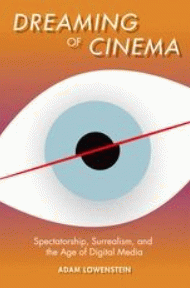This book offers a positive alternative to cinema's perceived crisis of realism and, in so doing, enriches the meaning of cinematic spectatorship in the twenty-first century. It begins by showing how video games, YouTube channels, Blu-ray discs and other forms of “new” media have made theatrical cinema seem “old.” It details how a sense of “cinema lost” has accompanied the ascent of digital media, and explains that many people now worry that film's capacity to record the real is fundamentally changing. The book goes on to argue that the Surrealist movement never treated cinema as a realist medium and that it understood our perceptions of the real itself to be a mirage. It uses the Surrealist interpretation of film's aesthetics and function to assess the writings, films and art of Luis Buñuel, Salvador Dalí, Man Ray, André Breton, André Bazin, Roland Barthes, Georges Bataille, Roger Caillois, and Joseph Cornell. It recognizes the significance of this body of work to the films of David Cronenberg, Nakata Hideo, and Atom Egoyan. It also recognizes its significance to the American remake of the Japanese Ring (1998) and a YouTube channel devoted to Rock Hudson.
[academic.oup.com]
[academic.oup.com]












